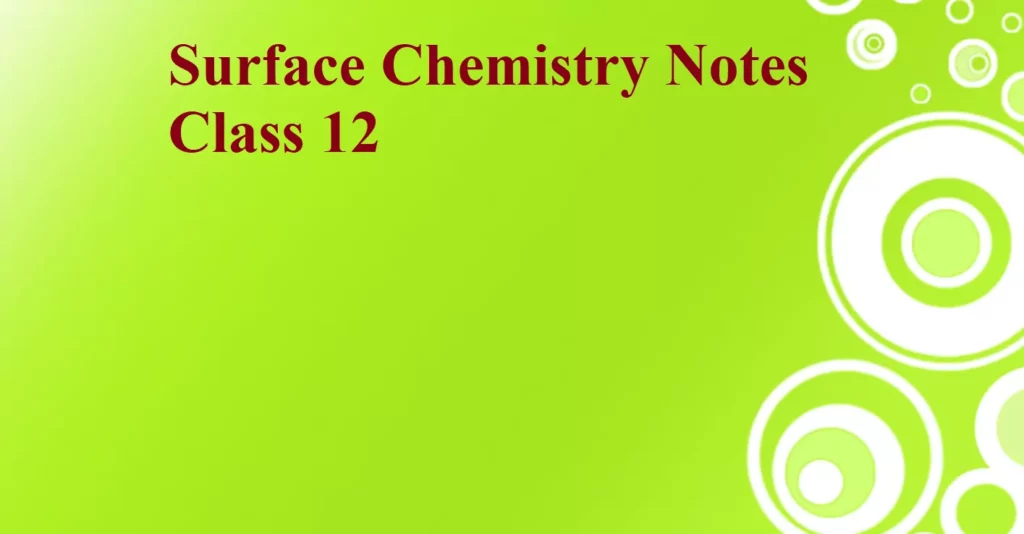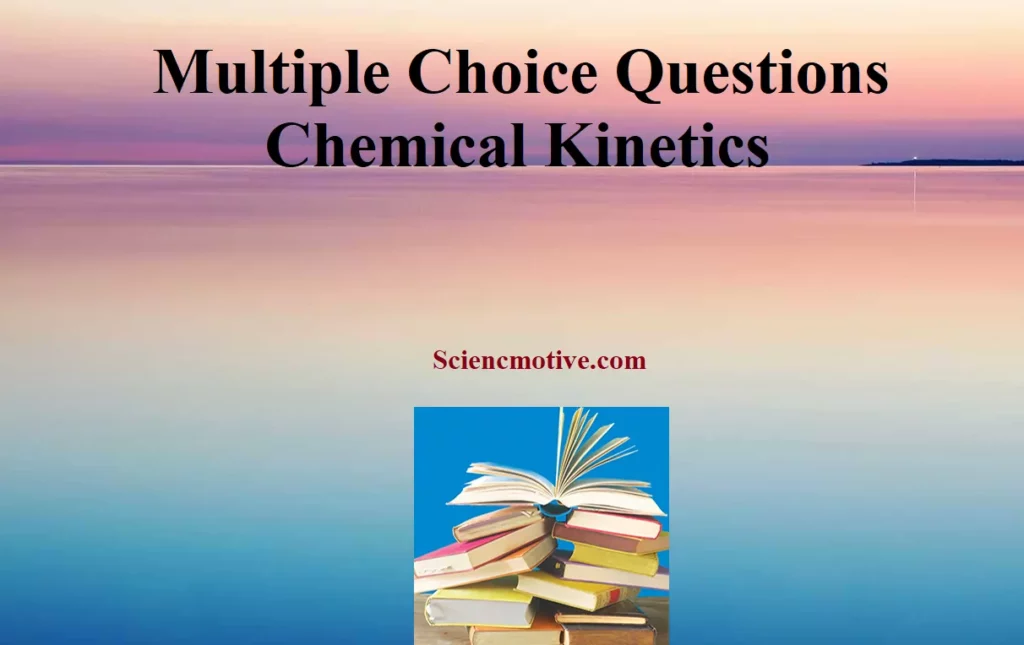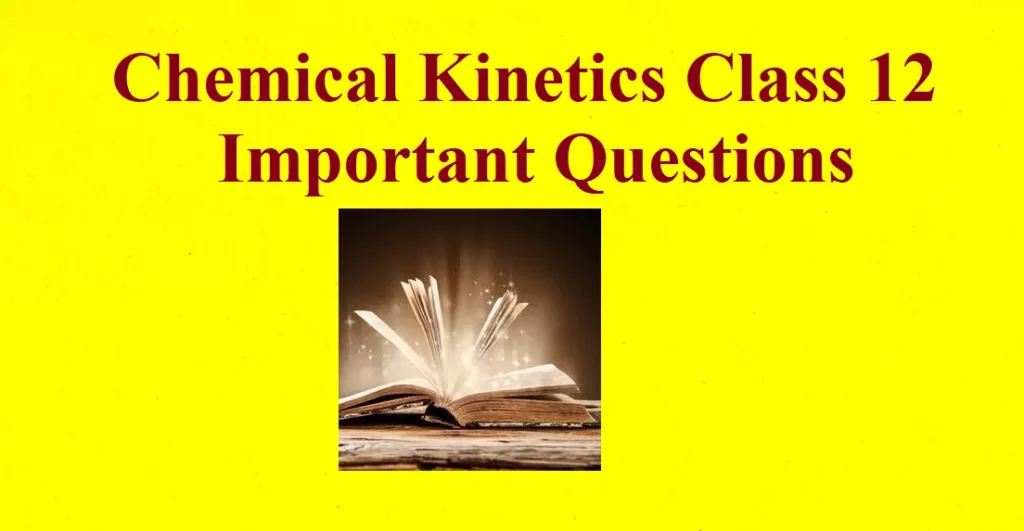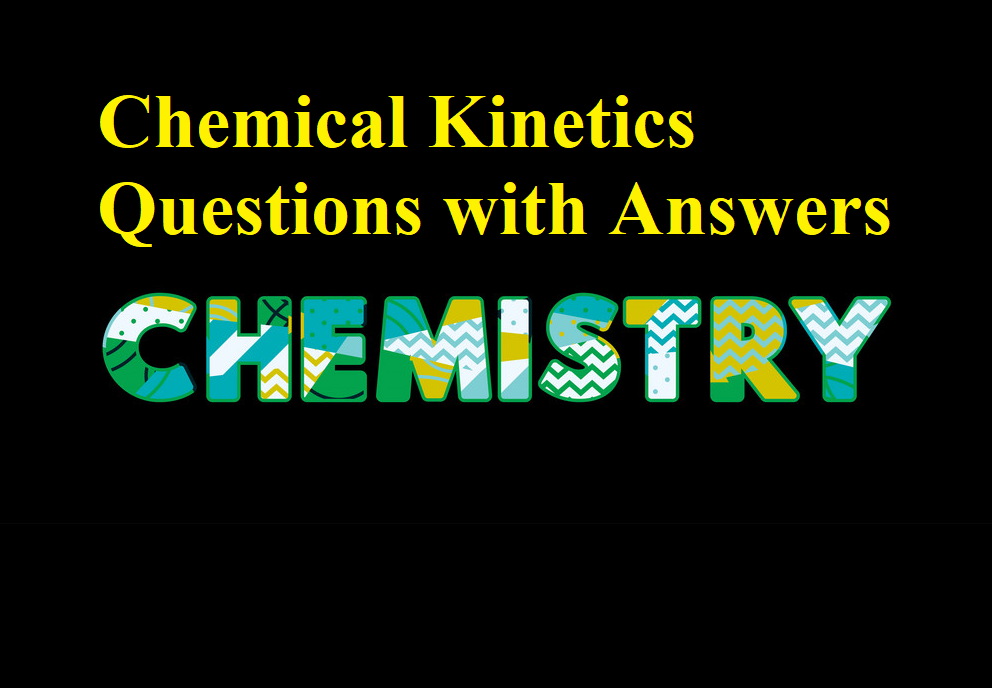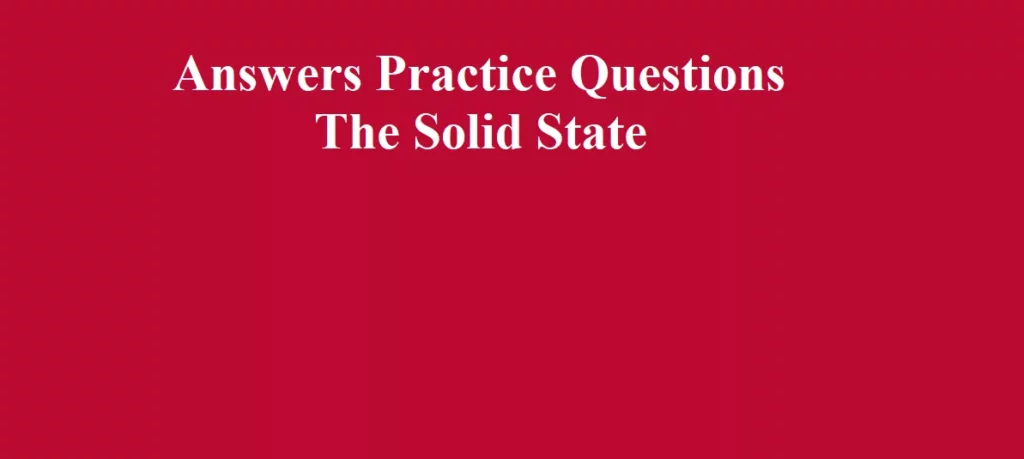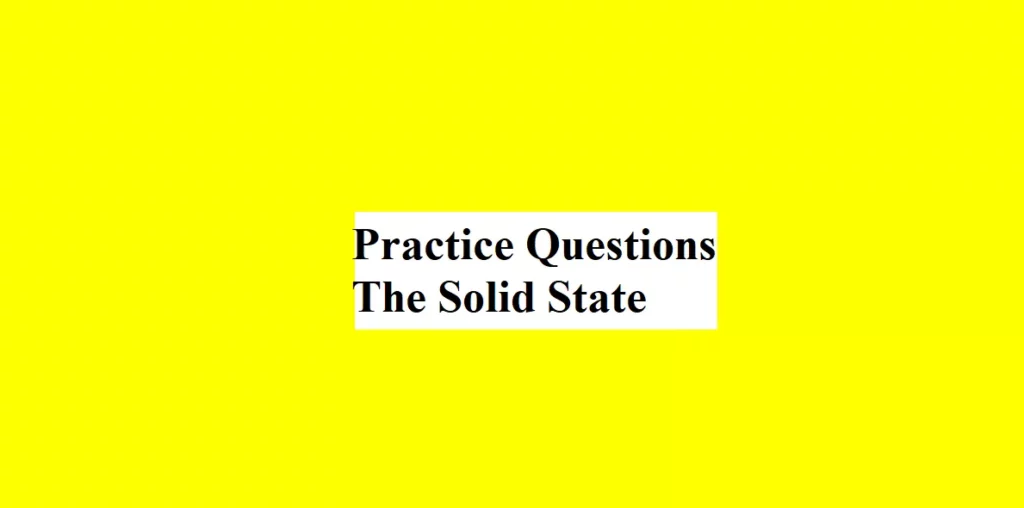Surface Chemistry Notes Class 12 Surface Chemistry is the branch of chemistry that deals with the study of the phenomenon occurring at the surface than bulk. Adsorption: The accumulation of molecular species at the surface rather than in the bulk of a solid or liquid is termed as adsorption. Adsorbate: The substance which is adsorbed is called adsorbate. Adsorbent: The substance whose surface on which adsorption takes place is called adsorbent. The commonly used adsorbents are charcoal, silica gel, alumina gel, clay, colloids, metals in a finely divided state, etc. Adsorption is a surface phenomenon. Some examples of adsorption are:…
Author: Dr. Vikas Jasrotia
Multiple Choice Questions Chemical Kinetics Que 1. In the reaction 2 NO + Cl2 → 2 NOCl, it has been found that doubling the concentration of both the reactants increases the rate by a factor of eight but doubling the chlorine concentration alone only doubles that rate. Which of the following statement is correct? 1. The reaction is second order in Cl2 2. The reaction is first order in NO 3. The overall order of the reaction is 2 4. The overall order of the reaction is 3 Ans 1. The overall order of the reaction is 2. Que 2. The…
Chemical Kinetics Class 12 Important Questions Que 1. Define the following: (a) Rate of reaction (b) Specific reaction rate or rate constant. Ans 1. (a) The change in concentration of any reactant or product per unit time is called the rate of reaction. (b) It is equal to the rate of reaction when the molecular concentration of reactant is at unity. Que 2. The rate law for a reaction is Rate = K [A] [B]5/2. Can the reaction be an elementary process? Explain Ans 2. No, because an elementary reaction is a chemical reaction in which one or more chemical species react directly to form products…
Chemical Kinetics Questions with Answers Chemical Kinetics Que 1. The rate constant of a reaction is 0.005 molL–1s–1. What is the order of this reaction? Ans 1. Zero-order reaction. Que 2. In a reaction, 2A → Products, the concentration of A decreases from 0.5 mol L–1 to 0.4 mol L–1 in 10 minutes. Calculate the rate during this interval? Ans 2: Rate = – change in conc. of A/2 × time interval = – [0.4 ‐ 0.5]/2 × 10 = 0.005 mol L–1min–1 Que 3. The rate constant for a first-order reaction is 60 s–1. How much time will it take to reduce the initial…
Collision Theory and Arrhenius Equation Arrhenius equation: Quantitatively, the temperature dependence of the rate of a chemical reaction can be explained by Arrhenius equation k = A e – Ea /RT where A is the Arrhenius factor or the frequency factor or the pre-exponential factor. R is gas constant and E a is activation energy measured in joules/mole. The factor e – Ea /RT corresponds to the fraction of molecules that have kinetic energy greater than Ea. Thus, it has been found from the Arrhenius equation that increasing the temperature or decreasing the activation energy will result in an increase in the rate…
Half-Life of A Reaction The half-life of a reaction (t1/2): It is the time in which the concentration of a reactant is reduced to one-half of its initial concentration. It is represented by t1/2. (i) Half-Life of a Zero Order Reaction: For a zero-order reaction, the integrated rate law is: k = [R0] – [R] t When t = t1/2, [R] = ½ [R0] On substituting these values in the above equation, k = [R0] – ½ [R0] t1/2 t1/2 = [R0] 2k …
Pseudo First Order Reaction Pseudo First Order Reaction: The reactions which are not truly of first order but become reactions of first-order under certain conditions are called pseudo-first-order reactions. Let us take a general reaction A + B → C The rate of reaction depends upon the concentrations of both A and B but one of the components is present in large excess and thus its concentration hardly changes as the reaction proceeds so the rate is independent of that particular component. So, if component B is in large excess and the concentration of B is very high as compared to that…
Chemical Kinetics Chemistry Class 12 Notes -ve sign before ΔR indicates the decrease in the concentration of reactant. Chemical Kinetics Chemistry Class 12 Notes Factors Affecting Rate of Reaction: i). The concentration of reactant ii). Surface area iii). Temperature iv). Nature of reactant v). Presence of catalyst. Dependence rate on Concentration: Rate Law: The rate of reaction is directly proportional to the product of the concentration of reactant and each concentration is raised to some power which may or may not be equal to stereochemistry experimentally. For a general reaction, aA + bB → cC + dD, Rate α [A]x[B]y Rate…
Answers Practice Questions The Solid State Ans 1. AgBr has both schottky and frenkel defects. In general, silver halides show both Schottky and Frenkel defects. It is because AgBr crystal has a coordination number of 6 which is neither high nor low. The radius ratio of AgBr is also intermediate, thus AgBr satisfies the conditions to exhibit both types of defects. Ans 2. (a). Packing Efficiency of Simple Cubic Unit Cell: (b). Packing Efficiency of Body Centred Unit Cell: (c). Packing Efficiency in Face Centred Unit cell: Ans 3. The smallest repeating unit of the space lattice is Unit…
Practice Questions The Solid State The Solid State Que 1. Write the name of a crystal showing both Schottky and Frenkel defects. Que 2. Which of the following lattices has the highest packing efficiency? Explain your answer: (a) Simple Cubic (b) Body Centred Cubic (c) Face Centred Cubic Que 3. The smallest repeating unit of the space lattice is _______ Que 4. A compound is formed by two elements P and Q. Atoms of ‘Q’ (anion) make hcp lattice and those of ‘P’ (cation) occupy all the tetrahedral voids. What is the formula of the compound? Practice…
